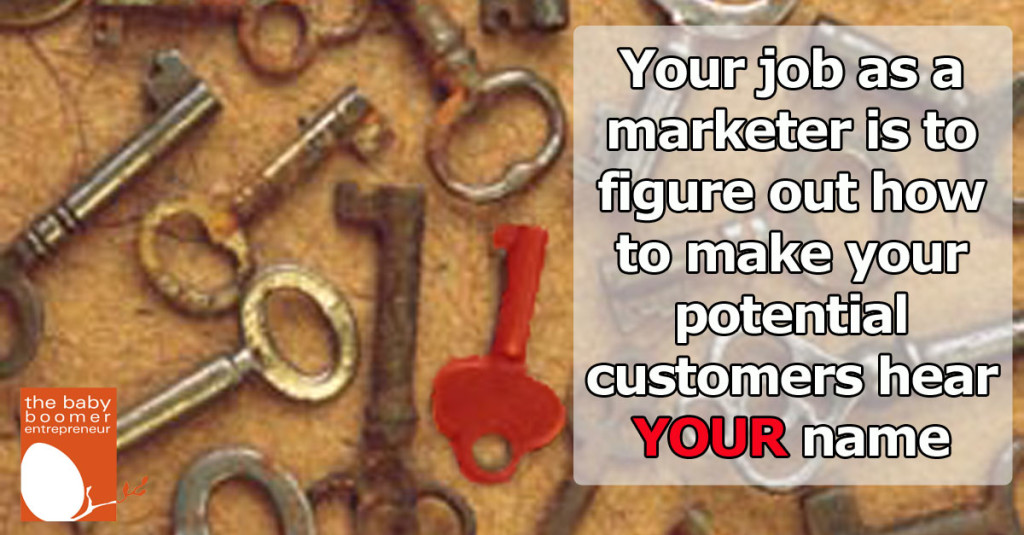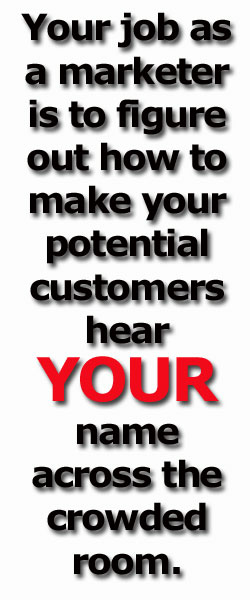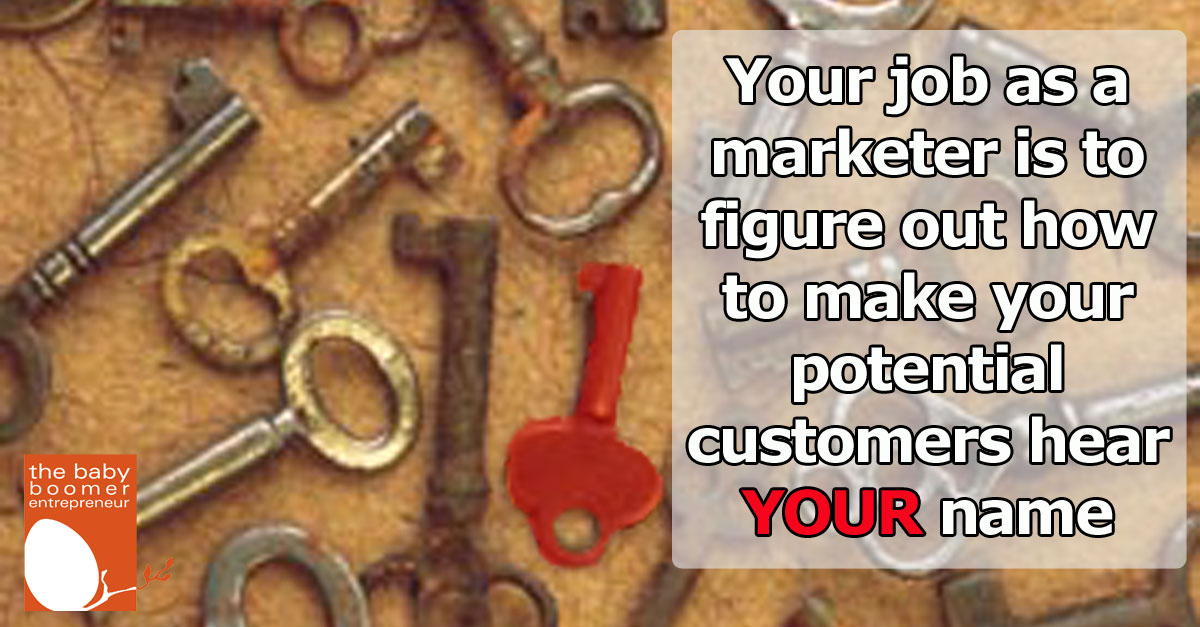
So, how many commercials, ads, signs, brands or even product placements did you see in a day? Dozens? Hundreds? Who knows.
The reason you don’t know is you filter out the noise. It’s something we do all the time. Think about the last time you were at a party. You can be talking to someone, the music is on and dozens of conversations are happening. Suddenly someone says your name from across the room and it’s like you have bionic hearing.
It’s because your name is important to you so you automatically pay attention to it. You can ignore anything else.
That’s why you don’t know how many ads you saw in a day – the names of all the brands and products you see are not as important to you as your own name so you don’t hear them.
And that’s exactly how it is for your customers. There’s so much advertising “noise” in their lives that they filter most of it out without being aware of it.
That’s where the marketing rule of seven come into play. The rule of seven is an old marketing adage that says the prospect needs to see your message seven times before they’ll take action. Now this “rule” dates back to a time before the internet, perhaps even before television. There was less “noise” in the marketing sphere.
Today it might be better named the rule of 27, 47 or 77 depending on your market and your product.
Your job as a marketer is to figure out how to make your potential customers hear YOUR name across the crowded room.
How do you do this?
That’s the $50,000 question. And what the marketing rule of seven is all about.
To help you be heard, here is Andrea’s New Marketing Rule of Seven.
1. Be crystal clear who your customers are.
Even if you have a product everyone can use, not everyone is your customer. You can’t market to everyone. If that person at the party who said your name said 
Create a model of your ideal client – an avatar if you will. Know all about him or her – age, education, interests, income, the works. Although it’s counter-intuitive, the more narrowly you can focus your marketing the better you will do (assuming you don’t get crazy focused and only market to Joe who lives next door).
2. Know who you are.
What is the product/service you provide and what makes you different from the competition.
And NO, don’t say customer service. It’s like that line from When Harry met Sally “Everyone thinks they have a sense of humour”. Same is true of customer service.
If you really think your customer service is what makes you better than the competition, what EXACTLY is it about the customer service you offer that is different?
3. Know the benefits of your products.
It’s not about what your product can do but how will you make your customer’s life better? Think about gum commercials – they are all pitching essentially the same product. But based on the ads if you chew gum you’ll have clean breath, get the girl, get the job or be cooler depending on which brand you buy.
What will your customers be, have or do after buying from you?
4. Keep your branding the same!
Your Facebook page, Google Plus page, business card, website and newspaper ad should clearly be from the same company and have the same basic message. Even if you didn’t have your name in the ad, could someone tell they’re all from your company? If not you may have to rethink what you’re doing.
5. Be persistent.
Just like you can’t shower once and say “there, I’m done. I never have to shower again”, you can’t market or advertise once. The marketing message I see today may be ignored. So may tomorrow’s. But if I need your product the day after that it will be like hearing my name across a crowded room. So keep at it.
6. Be everywhere.
First, it’s not likely your customer will see every ad, message or photo you post. By using multiple marketing vehicles you increases your chance that your future customers actually see your marketing.
Second, the more they see your message, the more likely you’ll get past the fog and actually penetrate their brains. If they feel like you are everywhere you start to seem familiar. That’s the first step in getting them to know, like and trust you so they can eventually buy from you.
7. Measure your results.
You need to be sure what you’re doing is actually working. If your marketing is not working you need to either figure out how to do it better or you need to try something else.
[magicactionbox]



